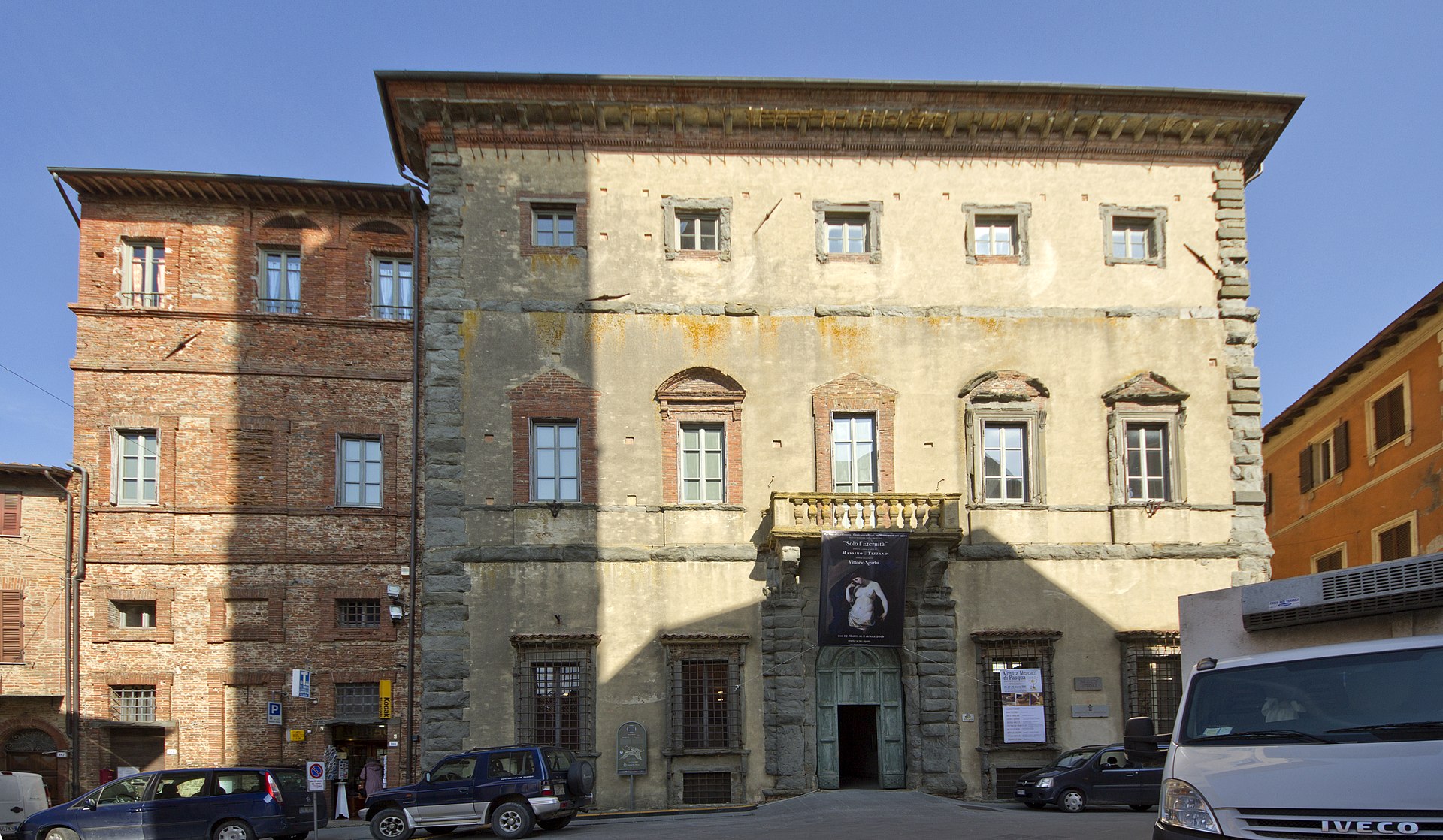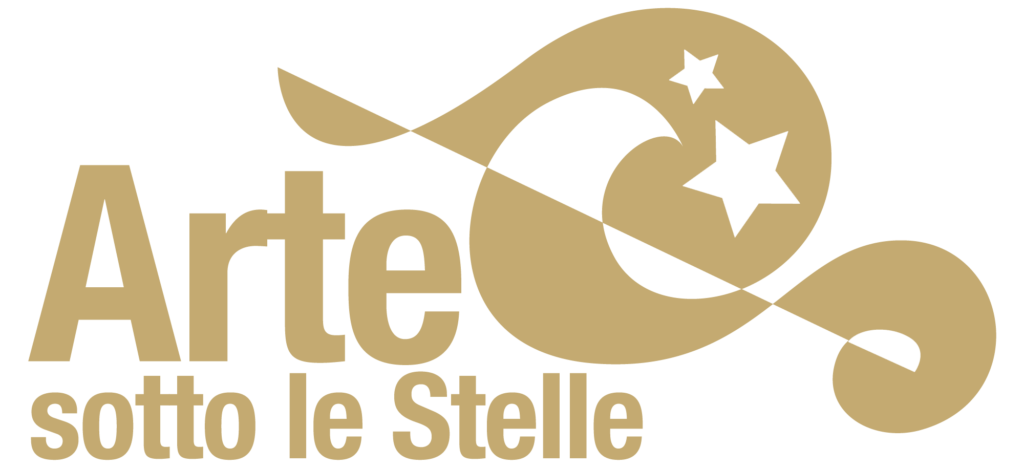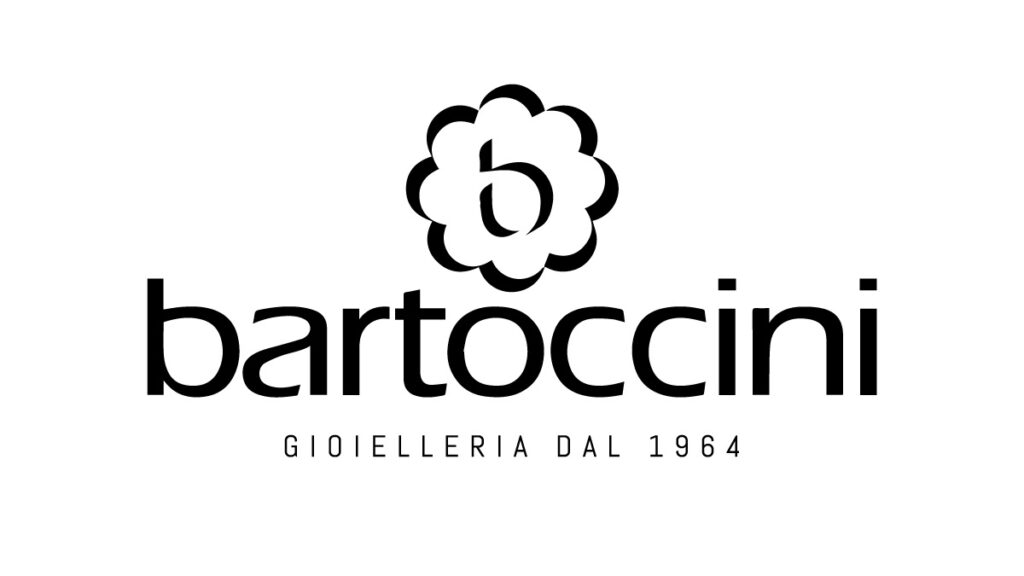Palazzo della Corgna – Città della Pieve
Il Palazzo della Corgna, nel centro storico di Città della Pieve, viene edificato tra il 1555 e il 1563 per volontà del marchese di Castiglione del Lago Ascanio della Corgna e del fratello cardinale Fulvio, membri di una famiglia mecenatizia e promotrice della costruzione di edifici di pregio e di notevole rilievo nel territorio umbro. Entrambi erano figli di Giacoma Ciocchi del Monte, sorella di Papa Giulio III, che le aveva assegnato la Signoria di “Castel di Pieve”.
Il progetto per l’edificio, che ingloba la palazzina di caccia appartenuta ai Baglioni, viene realizzato dall’architetto Galeazzo Alessi, mentre le ricche decorazioni pittoriche interne sono affidate al Pomarancio e al suo allievo Salvio Savini. A causa dei costi elevati per il mantenimento dei lavori di edificazione, pagati a spese dei pievesi tramite tasse molto elevate, il Palazzo non viene ultimato. Quando nel 1643 viene requisito dai preposti della Santa Sede, passa prima alla famiglia Amidei e poi, nel 1793, alla famiglia Mazzuoli: si devono a questi ultimi numerosi interventi, tra i quali la realizzazione dei pavimenti alla veneziana della Sala Grande e della Sala Rossa del primo piano.
Al primo piano, in cui si trovano gli ambienti di rappresentanza e l’appartamento di Ascanio della Corgna, le volte affrescate da Niccolò Circignani detto il Pomarancio nel 1564 raffigurano il Concerto di Muse. Il piano terra, invece, che fungeva da parte “segreta” del palazzo, di solito usata come luogo di svago intellettuale, si pensa affrescato da Salvio Savini che vi dipinse un Convito degli Dei.
In generale, tutti gli ambienti interni, così come gli scaloni monumentali, presentano decorazioni ad affresco con grottesche e grandi riquadri a carattere mitologico e sacro, seguendo uno schema rappresentativo tipico del Cinquecento romano.
Nel 1975, il Palazzo venne acquistato dall’Amministrazione Comunale: attualmente al piano terreno è situata la Biblioteca Comunale (ove si trova anche un obelisco etrusco risalente al sec. V a.C.), mentre al primo piano, oltre al Museo di Scienze e di Storia Naturale del Territorio, si trovano anche delle sale attrezzate per mostre.
Interno
Nel dettaglio, la descrizione delle Sale, che prendono il nome del soggetto raffigurato negli affreschi che le decorano.
Partendo dal primo piano, si trova la “Sala di Paride”. Al centro della volta è dipinto il Giudizio di Paride mentre negli ottagoni laterali sono raffigurati Ercole che uccide l’Idra, Diana e Endimione, Perseo e Andromeda, Piramo e Tisbe. Gli affreschi celebrano il matrimonio tra Diomede della Corgna, nipote e figlio adottivo di Ascanio, con Porzia Colonna. I quattro stemmi agli angoli risaltano la parentela coi Colonna: a sinistra lo stemma del cardinale Fulvio della Corgna, fratello di Ascanio, inquartato con quello dei Ciocchi del Monte, casato di papa Giulio III e di Giacoma, madre di Ascanio e Fulvio, e lo stemma di Diomede della Corgna. A destra il palazzo riporta lo stemma corgnesco partito con lo stemma Colonna ad indicare il prestigioso matrimonio, e lo stemma del cardinale Marcantonio Colonna.
La “Sala delle gesta di Ascanio” celebra il fondatore della dinastia le cui vicende politiche e militari sono rappresentate lungo le pareti in sedici finti arazzi. Sulla volta, Ascanio della Corgna riceve da Giulio III il bastone di “Custode della Chiesa”. Lungo le pareti, una delle scene più significative del ciclo è quella che narra l’assedio di Genova in cui Ascanio combatte valorosamente nonostante la giovane età; seguono poi il duello con Giovanni Taddei, ricordato per la celebre “stoccata” inflitta al nemico, l’incontro con il re di Spagna Filippo II e la battaglia di Lepanto, l’ultima grande impresa di Ascanio. La decorazione del pavimento, con gli stemmi della Corgna e Colonna, celebra nuovamente il matrimonio tra Diomede e Porzia.
La “Sala dell’Eneide” racconta la storia dell’epico Enea: il valoroso eroe, dopo essere fuggito da Troia distrutta dai Greci, approda nel Lazio, dove i suoi discendenti fonderanno Roma, secondo il racconto di Virgilio nell’Eneide, testo a cui gli autori degli affreschi si riferiscono in maniera puntuale. Altri personaggi mitologici, quali Ercole, Cerere, Vulcano e Venere, sono un celato riferimento a Diomede e alla celebrazione del suo marchesato.
Nella “Sala degli dei” Zeus, nella volta, rappresenta il Re dell’Olimpo ed è accompagnato da altre divinità; compaiono anche i dodici segni zodiacali.
La “Sala della battaglia del Trasimeno”, corrisponde all’antica camera di Ascanio II. Il ciclo pittorico narra la battaglia del Trasimeno attraverso quattro episodi del celebre scontro tra le truppe di Annibale e l’esercito romano che ebbe luogo nei pressi dell’attuale Tuoro sul Trasimeno, nel 217 a.C.
La “Sala di Plutone e Proserpina”, camera della sorella di Ascanio, Laura della Corgna, è dedicata al mito di Proserpina, la giovinetta figlia della dea della Fertilià Cerere, rapita dal signore degli Inferi Plutone; il mito si conclude con il patto che Proserpina debba trascorrere sei mesi l’anno nell’Ade e sei mesi sulla Terra.
La dea Cerere è un velato riferimento a Laura che, partorendo Diomede, permette la continuità dinastica della famiglia.
La “Sala di Cesare”, antico studiolo di Diomede, celebrato nella volta grazie allo stemma dei Della Corgna, è dedicata alle imprese dell’imperatore romano Giulio Cesare e si conclude con la rappresentazione delle Idi di Marzo. Dalla Sala, una porta permette l’accesso al camminamento coperto che unisce il palazzo alla fortezza medievale.
Il pianterreno, caratterizzato dalla “Sala del Mondo alla rovescia”, la “Sala delle arti” e la “Sala delle Metamorfosi”, era destinato ad ospitare intrattenimenti letterari e gare musicali. Nella prima sala, oltre agli Dèi, sono raffigurate le immagini del Mondo al contrario, come ad esempio il topo che cattura il gatto e la selvaggina che cattura il segugio, che ammoniscono circa il sovvertimento dell’ordine naturale delle cose se non si rispettano i propri doveri. Seguono, nella seconda sala, le Arti in chiave allegorica secondo le indicazioni del trattato di Cesare Ripa. Nel terzo ambiente, sono dipinte alcune scene delle Metamorfosi di Ovidio sovrastate dallo stemma partito di Fulvio della Corgna e Eleonora de Mendoza.











